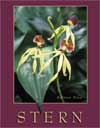1. Four phyla of seedless vascular plants are recognized: Psilotophyta
(whisk ferns); Lycophyta (club mosses and quillworts); Equisetophyta (horsetails
and scouring rushes); and Polypodiophyta (ferns). 2. Whisk ferns (Psilotum) are the simplest of all living vascular
plants, consisting of evenly forking green stems that have small protuberances
called enations, but no leaves; roots are also lacking. The stem contains a
central cylinder of xylem and phloem. 3. Whisk fern spores germinate into tiny gametophytes, with antheridia
and archegonia scattered over their surfaces. The zygote develops a foot and
a rhizome. Upright stems are produced when the rhizome separates from the foot. 4. Tmesipteris, an Australian relative of whisk ferns, has leaflike
appendages. Fossil plants resembling whisk ferns have been found in Silurian
geological formations. 5. There are two genera of club mosses with living members. Ground
pines (Lycopodium) develop sporangia in the axils of sporophylls. Several
sporophytes may be produced from one gametophyte. Spike mosses (Selaginella)
are heterosporous and have a ligule on each microphyll; microspores develop
into male gametophytes with antheridia, and the megaspores develop into female
gametophytes with archegonia. 6. Quillworts (Isoetes) are heterosporous and have quill-like
microphylls that arise from a cormlike base. The corms have a cambium that remains
active for many years. 7. Some fossil relatives of club mosses were large dominant members
of the forests and swamps of the Carboniferous period. 8. Club moss spores have been used for flash powder, medicinal purposes,
as talcum powder, and to staunch bleeding. The plants themselves have been used
as ornamentals, novelty items, Christmas ornaments, and for intoxicating purposes. 9. Horsetails and scouring rushes (Equisetum) accumulate deposits
of silica in their epidermal cells and have made good scouring material. They
occur in both unbranched and branched forms. The stems are jointed and ribbed
and have tiny scalelike leaves in whorls at each joint. 10. The stems of Equisetum are centrally hollow and contain cylindrically
arranged carinal and vallecular canals. The stems arise from rhizomes that branch
extensively below the surface of the ground. 11. Some species of Equisetum produce non-photosynthetic stems.
Conelike strobili are produced in the spring in all species. Equisetum
spores have ribbonlike elaters that are sensitive to changes in humidity. 12. Equal numbers of male and female gametophytes are produced, but female
gametophytes may become bisexual. The development of more than one sporophyte
from a gametophyte is common. 13. Ancient relatives of horsetails were the size of trees when they flourished
in the Carboniferous period of 300 million years ago. 14. Horsetails have been used for food after the parts containing silica
were removed, but they are not recommended for human consumption. They have
also been used medicinally as a diuretic, as an astringent, and in the treatment
of venereal disease and tuberculosis. Other uses include a hair wash, a mineral
indicator, and a metal polish. Cannel coal consists primarily of spores of giant
horsetails that were reduced to carbon. 15. Fern leaves (fronds) are typically divided and feathery in appearance
but vary greatly in form. They usually first appear as croziers that unroll
and expand. 16. Patches of sporangia appear on the lower surfaces of fern fronds. The
sporangia commonly occur in sori, which may be protected by indusia. Each sporangium
has an annulus that functions in catapulting mature spores out of the sporangium. 17. Fern gametophytes (prothalli) develop after spores germinate. Most
prothalli contain both archegonia and antheridia; only one zygote develops into
a sporophyte. 18. Possible ancestors of ferns are found in Devonian deposits estimated
to be 375 million years old. 19. Ferns are used as ornamentals, air filters, a source of "bark"
for growing orchids and other plants, a source of stuffing materials for bedding,
in tropical construction, as food, and in numerous folk medicinal applications.
Other uses include basketry and weaving material, ingredient in brewing ale,
and ingredient in the preparation of chamois leather. One floating fern forms
dense mats and is believed to suffocate mosquito larvae. 20. Fossils are recognizable prehistoric organic objects that are formed
in different ways. Molds, casts, compressions, and imprints are formed when
material buried by silt or other sediment has hardened into rock and the organic
material has slowly been washed away by water. 21. Petrifactions are uncompressed rocklike materials in which the original
cell structure has been preserved. Coprolites are fossilized dungs that may
contain pollen grains and other plant and animal parts. Unaltered fossils are
those of plants or animals that may have fallen into bodies of oil or water
or snowfields and were not subjected to decay. | 


 2003 McGraw-Hill Higher Education
2003 McGraw-Hill Higher Education